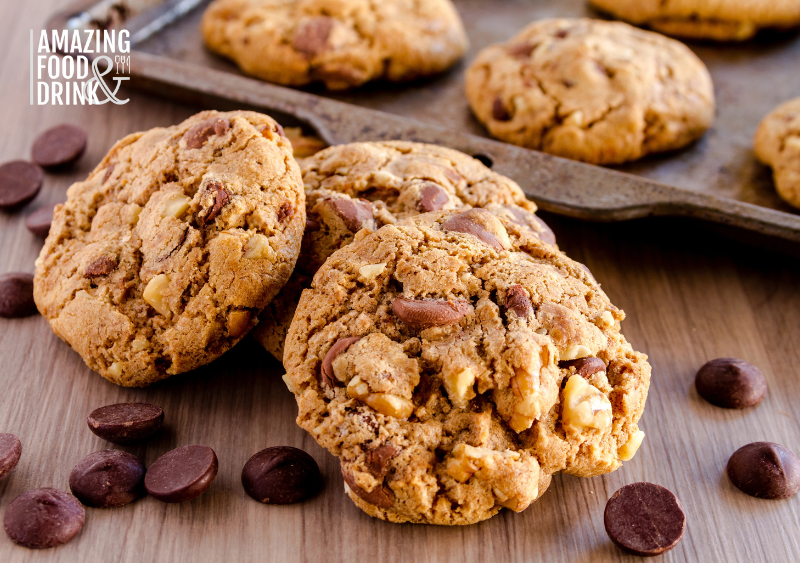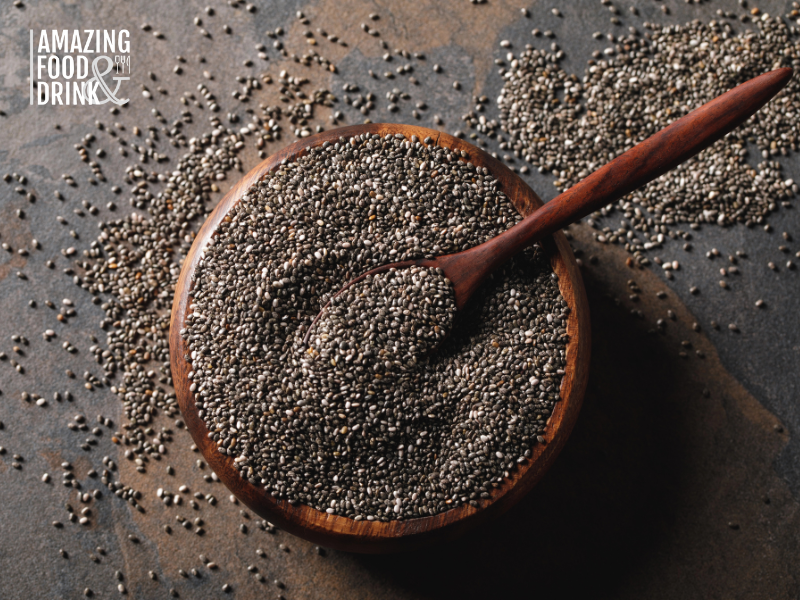Egg and Nut-Free Desserts: Delicious Recipes for All
Ever found yourself in a bit of a pickle trying to locate scrumptious desserts that are hip to egg and nut allergies? Fear not! This article is your sweet escape. We will explore a delightful world of delicious desserts that are completely free of eggs and nuts. Whether you are baking for yourself, a friend, or a potluck, these recipes are guaranteed to satisfy every sweet tooth.
From vibrant fruit crisps to rich chocolate creations, we will show you how to create show-stopping desserts that are safe and scrumptious for everyone to enjoy. So, preheat your oven, grab your mixing bowl, and get ready to indulge in a sweet journey of allergy-friendly treats!
Egg and Nut-Free Desserts
For those with allergies or dietary restrictions, the following egg and nut-free desserts offer a delightful solution, catering to a broader range of tastes and needs. These desserts often rely on innovative ingredient substitutions, ensuring they remain decadent and satisfying. These desserts not only accommodate dietary needs but also showcase the versatility as well as the creativity of plant-based ingredients, making them accessible and enjoyable for all dessert enthusiasts.
1. Dairy-Free Cake

Dairy-free cake offers a delicious solution for those with lactose intolerance, dairy allergies, or individuals opting for a plant-based lifestyle. With a careful selection of alternative ingredients such as plant-based milk, oils, and dairy-free margarine, dairy-free cakes can achieve the same moist texture and rich flavour as their traditional counterparts.
Whether for special occasions or everyday indulgence, dairy-free cakes prove that dietary restrictions need not stand in the way of enjoying a delectable dessert. Here is how to make them:
- Pour two cups of self-rising flour into a large bowl, one and a half cups of sugar, and half a cup of cocoa powder.
- Mix water, vegetable oil, and a vanilla extract in another bowl, and then slowly add this mix to the dry ingredients while stirring well. Make sure there are no lumps.
- Next, pour the batter into your cake tin.
- Bake your cake in an oven set at 175°C.
- Let the cake cool before serving.
2. Allergy-Friendly Brownie Bites

Crafted with careful consideration of common allergens such as eggs, nuts, and dairy, these bite-sized treats ensure everyone can indulge in the rich, chocolatey goodness of brownies without worry. They can be made with alternative flours like almond or coconut, sweetened with natural substitutes like maple syrup or dates, and even enriched with ingredients like avocado or pumpkin puree. This is how to make these heavenly bites:
- Preheat the oven to 175°C and grease a mini muffin tin.
- In a bowl, mix together coconut or almond flour, cocoa powder, baking powder, and salt.
- In another bowl, combine maple syrup, melted coconut oil, applesauce, and vanilla extract.
- Gradually add the wet ingredients to the dry ingredients and stir until just combined.
- Spoon the batter into the muffin tin, filling each cup about 2/3 full.
- Bake for 12-15 minutes or until a toothpick inserted into the centre comes out clean.
- Let the muffins cool in the tin for a few minutes, then transfer them to a wire rack to cool completely.
- Enjoy these allergy-friendly brownie bites as a delicious treat!
3. Lemon-Apricot Fruit Pops

Lemon-apricot fruit pops offer a refreshing and healthy treat, perfect for hot summer days or any time you crave a burst of fruity goodness, combining the zesty brightness of lemon with the sweet tang of apricot. They are made with pureed apricots, freshly squeezed lemon juice, a touch of honey or agave for sweetness, and a hint of zest for added vibrancy. They are not only delicious but also packed with vitamins and antioxidants. Here is how to make them:
- In a blender or food processor, combine the apricot puree, lemon juice, granulated sugar, lemon zest, and water. Blend until smooth.
- Taste the mixture and adjust the sweetness if needed by adding more sugar.
- Pour the mixture into popsicle moulds, leaving a little space at the top for expansion. Insert popsicle sticks into each mould.
- Place the moulds in the freezer and let them freeze for at least 4-6 hours or until completely solid.
- Once frozen, remove the popsicles from the moulds by running warm water over the outside of the moulds for a few seconds to loosen them.
- Serve immediately and enjoy these refreshing lemon-apricot fruit pops on a hot day!
Feel free to customise this recipe by adding chopped fruit chunks or a splash of coconut milk for a creamier texture.
4. Soft Honey Cookies
Soft honey cookies embody the perfect blend of warmth and sweetness, offering a comforting indulgence reminiscent of home-baked goodness. Infused with the natural richness of honey, these cookies boast a tender crumb and a subtle floral note that delights the palate. You can enjoy them with a cup of tea as a cosy afternoon treat or share them with loved ones during festive gatherings.
Speaking of their making, they are just as far from complexity as the moon from the earth. All you need is flour, butter or oil, honey, and a touch of spice and to follow this recipe:
- Preheat your oven to 175°C and line a baking sheet with parchment paper.
- In a mixing bowl, cream together the softened butter (or coconut oil) and honey until smooth and creamy.
- Add the vanilla extract and mix until well combined.
- In a separate bowl, whisk together the flour, baking soda, salt, and optional spices if using.
- Gradually add the dry ingredients to the wet ingredients, mixing until a soft dough forms.
- Using a spoon or cookie scoop, portion out the dough and roll it into balls, placing them onto the prepared baking sheet.
- Gently flatten each dough ball with the palm of your hand or the back of a spoon to create round cookie shapes.
- Bake in the preheated oven for 8-10 minutes or until the edges are lightly golden.
- Remove from the oven and allow the cookies to cool on the baking sheet for a few minutes before transferring them to a wire rack to cool completely.
- Once cooled, enjoy these soft honey cookies with a glass of milk or a cup of tea for a comforting treat.
5. Vegan Chocolate Chip Cookies

Vegan chocolate chip cookies offer a delectable twist on the classic favourite, providing a cruelty-free and plant-based alternative that is just as irresistible. With rich chocolatey goodness and a soft, chewy texture, these cookies, featuring coconut oil or vegan butter, flaxseed meal or applesauce as egg replacements, and dairy-free chocolate chip as the main ingredients, prove that you do not need eggs or dairy to create an indulgent treat.
Here is your recipe:
- As always, preheat your oven to 175°C and line a baking sheet with parchment paper.
- In a large mixing bowl, cream together the softened coconut oil or vegan butter with the brown sugar and granulated sugar until well combined.
- Add the almond milk, flaxseed meal mixture (or applesauce), and vanilla extract to the creamed mixture and mix until smooth.
- In a separate bowl, whisk together the flour, baking soda, and salt.
- Gradually add the dry ingredients to the wet ingredients, mixing until a thick cookie dough forms.
- Fold in the dairy-free chocolate chips until evenly distributed throughout the dough.
- Using a spoon or cookie scoop, portion out the dough and roll it into balls, placing them onto the prepared baking sheet.
- Flatten each dough ball slightly with the palm of your hand.
- Bake in the preheated oven for 10-12 minutes or until the edges are lightly golden.
- Remove from the oven and let the cookies cool on the baking sheet for a few minutes before transferring them to a wire rack to cool completely.
Once cooled, you can classically enjoy these vegan, guilt-free cookies with a glass of almond milk or pack them in a lunchbox for an on-the-go snack.
Eggs and Nuts Substitutes
While some recipes are naturally free from eggs or nuts, many other desserts do have these two ingredients, but that does not mean those with allergies or vegans cannot enjoy them, for there are always replacements, as we have seen in the previous recipe.
In this section, we are going to provide you with multiple egg and nut substitutes to help you enjoy a wider range of desserts.
1. Egg Replacements

Egg allergies can make baking a bit tricky, yet with the following egg alternatives, there is no way you can miss out on tasty desserts.
First of all, we have chia seeds. Just mix one tablespoon of chia seeds with three tablespoons of water. Let it sit for 15 minutes, and it will be ready to use as an egg.
Flax meal is also a great egg substitute in vegan baking due to its binding properties. It is made by grinding whole flax seeds into a fine powder, a nutritious addition rich in fibre, omega-3 fatty acids, and lignans. All you have to do is mix one tablespoon of flax meal with two and a half tablespoons of water, wait for five minutes, and you are good to go.
You can also try using cornstarch. One tablespoon of cornstarch mixed with two tablespoons of water equals one egg.
Another egg alternative is applesauce. This is a puree made from cooked apples, often sweetened with sugar or spices like cinnamon and is commonly used as a natural sweetener or topping. As an egg substitute in baking, a quarter cup of applesauce makes up for one egg and can provide moisture and flavour and reduce the need for butter or oil.
Likewise, mashed ripe bananas make a fantastic egg substitute in baked goods like breads and pancakes. They add sweetness and moisture while acting as a binding agent.
When baking desserts without nuts, there are many alternatives you can use instead of eggs. Here are some nut-free options to try:
- Nut butter: Instead of using eggs, you can use nut butter, either almond butter or peanut butter, in your baking recipes. It helps a lot in binding the ingredients together and adds richness to the texture.
- Seed butter: If you would like to avoid nuts altogether, seed butter like sunflower or pumpkin seed butter can, too, be used as a substitute for eggs. They have a similar texture and taste, making them great alternatives.
- Silken tofu: For creamy desserts like cheesecake or puddings, silken tofu can be used as an egg alternative. It creates a smooth texture while providing structure to the dessert.
Adjusting Ratios and Measurements
When substituting eggs and nuts in dessert recipes, it is important to adjust the measurements and ratios of other ingredients. For example, if you are using applesauce as an egg substitute, you may need to reduce the amount of liquid in the recipe.
It is also helpful to keep in mind that some egg replacements work better than others, depending on the type of dessert you are making. For instance, mashed bananas or yoghurt can be used instead of eggs in moist cakes, while baking soda or even white vinegar can be used as leavening agents.
Experimenting with different substitutions and adjusting the quantities will help you achieve delicious results without eggs or nuts.
Common Allergens to Watch Out For in Desserts
Cutting out eggs and nuts from dessert recipes is the most straightforward way to avoid allergens. However, there are sometimes hidden amounts of eggs and nuts and maybe other ingredients that can provoke allergic reactions.
Here are some sneaky allergens to watch out for.
1. Hidden Sources of Eggs
The following are some hidden sources of eggs that can be found in desserts. It is important to be aware of these sources if you have an egg allergy or are avoiding eggs for any reason. Here they are:
- Lecithin: This ingredient is found in many processed foods, including chocolate bars, salad dressings, and baked goods. It acts as an emulsifier and can come from egg yolks.
- Marzipan: This sweet almond paste is often used as a filling or decoration in cakes and pastries. Traditional marzipan contains egg whites, so be cautious if you are avoiding eggs.
- Shiny glaze: Some desserts have a shiny coating on top, which may contain egg white to achieve that glossy appearance.
- Yellow baked goods: Cakes, muffins, and other baked goods with a yellow colour may get their hue from egg yolks.
- Nougat: This chewy candy often contains whipped egg whites for texture and structure.
2. Cross-Contamination
Cross-contamination presents a significant concern in food preparation, particularly for individuals with food allergies or intolerances. It occurs when allergenic ingredients come into contact with surfaces, utensils, or other foods, potentially transferring allergens to foods that should be allergen-free.
In dessert making, this can happen through shared equipment, improperly cleaned surfaces, or even airborne particles. More elaborately, here is how cross-contamination can happen:
- Manufacturing process: Cross-contamination can happen during the manufacturing process when products containing nuts are processed on the same equipment as other foods. This can lead to trace amounts of nuts being present in supposedly nut-free products.
- Food preparation: In restaurants or bakeries, cross-contamination can happen if utensils or surfaces that have come into contact with nuts are then used to prepare nut-free dishes.
- Hidden sources of nuts: Some food items may not clearly list nuts as an ingredient but may still contain traces or be processed on shared equipment. It is important to carefully read food labels and look out for any potential allergens.
Here are some tips for reading labels to ensure you are choosing allergen-free treats:
- Look for clear statements: The FDA requires foods to clearly state if they contain major food allergens like eggs and nuts. Check the list of ingredients for any mention of these allergens.
- Be aware of hidden sources: Eggs can be found in many forms, such as albumin or lecithin. Nuts may be listed under different names, such as almonds or cashews. So, familiarise yourself with alternative names for these ingredients.
- Watch out for cross-contamination: Look for labels that indicate the product has been made in a facility free from cross-contamination.
Even if a product claims to be “peanut-free” or “egg-free,” it is essential to read the ingredient list carefully.
Conclusion
So whether you have dietary restrictions or allergies or simply want to explore new baking avenues, egg and nut-free desserts open a delicious door to endless possibilities. With a little bit of creativity and these helpful tips, you can whip up delightful treats that everyone at the table can enjoy.
From childhood favourites to elegant showstoppers, there is a delicious egg and nut-free dessert out there waiting to be discovered. So happy baking and happy sharing!

